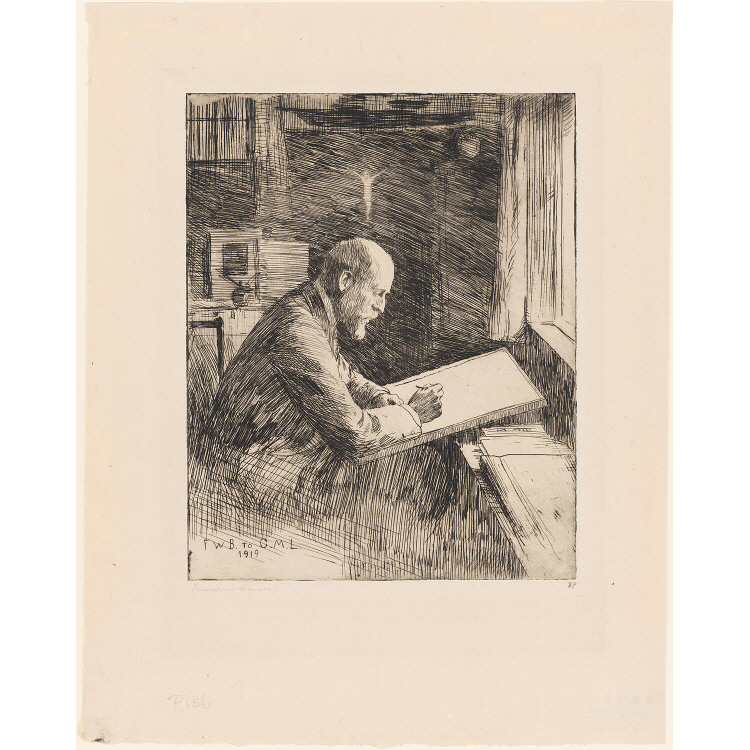Frank Weston Benson
Frank Weston Benson was the son of a successful cotton merchant of Salem, Massachusetts and studied under Otto Grundman at the School of the Museum of Fine Arts, Boston. In 1883, Benson and fellow Bostonian Edmund Tarbell journeyed to Paris to continue their studies at the Académie Julian, an institution that attracted many young Americans.
On their return to Boston, Benson and Tarbell shared a studio and for many years both taught at the Museum School. There they mentored a host of young artists thereafter termed the Bostonians, a school whose work reflected the manners and mores of a community currently experiencing the Indian summer of its long cultural dominance. Faced with Irish Catholic ascendancy and waning economic influence, the Boston Brahmins waged a futile effort to sustain the authority of the WASP elite. The hopes, illusions, and apprehensions engendered by their decline were depicted in the paintings of the Bostonians. The genteel tradition was reaffirmed and the sanctity and grace of elite womankind were depicted on their canvases. Many of the Bostonians' paintings were touched by the light and dashing brushwork of Giverny. A few artists, including Benson and Tarbell, were much impacted by the recent 'rediscovery' of Vermeer, especially in their concern for spatial organization and the distribution of light.
Benson's most impressionistic work was done between 1895 and 1910. The sun-filled plein air paintings of his daughters in their gauzy summer frocks depict idealized young creatures in a carefree world.
In 1897, Benson, Tarbell, and fellow Bostonian Joseph de Camp left the increasingly conservative Society of American Painters and helped found the Ten American Painters. The Ten was a stylistically heterogeneous group, but all were to some degree touched by the impressionism of the age and moved to exhibit in a more intimate environment than the Salon system offered. They continued to exhibit together for more than twenty years, and eight of their number are represented in the current show.
After 1915, Benson began to devote much of his attention to printmaking. An avid sportsman, he created etchings of waterfowl and duck hunting which were influenced by the bold asymmetry of Japanese paints.
Still Life is a late work (about 1926) strongly designed and richly painted. It is a large canvas with a complex but strongly unified arrangement of objects, which as the catalogue remarks, "recall the grandeur of old-master paintings."
Emery Battis Artist Biographies for the exhibition American Impressionism: Treasures from the Smithsonian American Art Museum (Washington, D.C.: Smithsonian American Art Museum, 2000






















